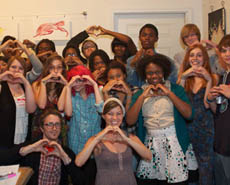Philadelphia, Detroit, Cleveland, Atlanta—these major U.S. cities top data lists as the slowest to recover from the recession. Their areas of weakness include high unemployment rates, failing businesses, job losses, crime, and strained budgets but a greater common theme unites them. The cities are too historic, too important, to fail. Restoring these iconic cities to their former glory—or better, propelling them towards an even brighter future—requires a significant amount of creativity. Community leaders are forming dynamic partnerships with local businesses and governments. The collaborations aim to revitalize America’s cities, breathing new life into them through arts education, community programming, and structural reimagining. Two programs in Atlanta are an excellent illustration of the sort of creative approaches that can make a notable difference. LaShawn Hoffman, CEO of Pittsburgh Community Improvement Association (PCIA) in Atlanta, has been a member of the Pittsburgh community for ten years. The neighborhood, first overlooked during the city’s 1996 Olympic revitalization efforts and then hit hard during the housing market downturn, had settled into a state of neglect. Abandoned homes and empty storefronts opened the gate to increased crime and a lack of community cohesion. Hoffman witnessed multiple break-ins and other crimes firsthand. He was determined to witness the neighborhood’s restoration firsthand as well. “This is my home,” he says. “I’m personally invested here and I’ve long been able to see its potential.” PCIA purchased 31 bank-owned homes in Pittsburgh using funds from the Neighborhood Stabilization Program. After restoring the homes, additional local grants were used to give the properties eco-friendly updates. The renovated properties were then placed back on the market at affordable prices. Though it was an excellent start towards giving the neighborhood a face lift, Hoffman and his team knew that pretty houses would not address the root...

